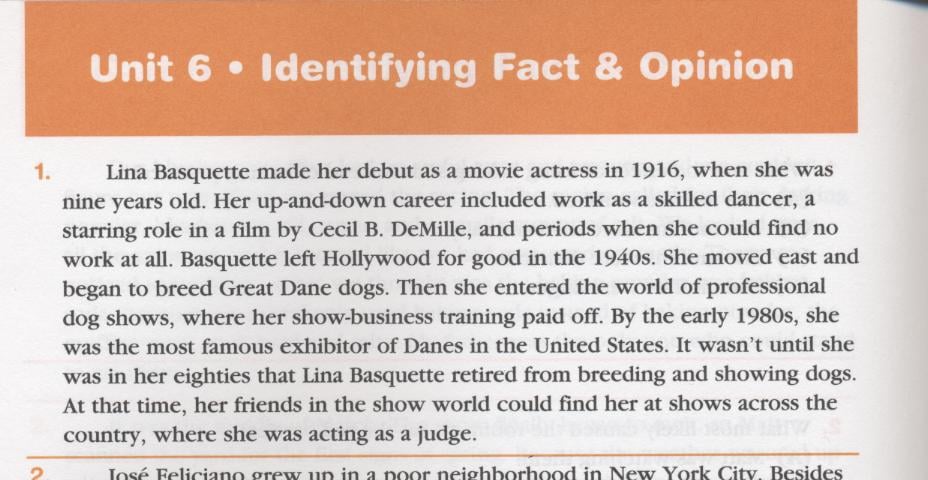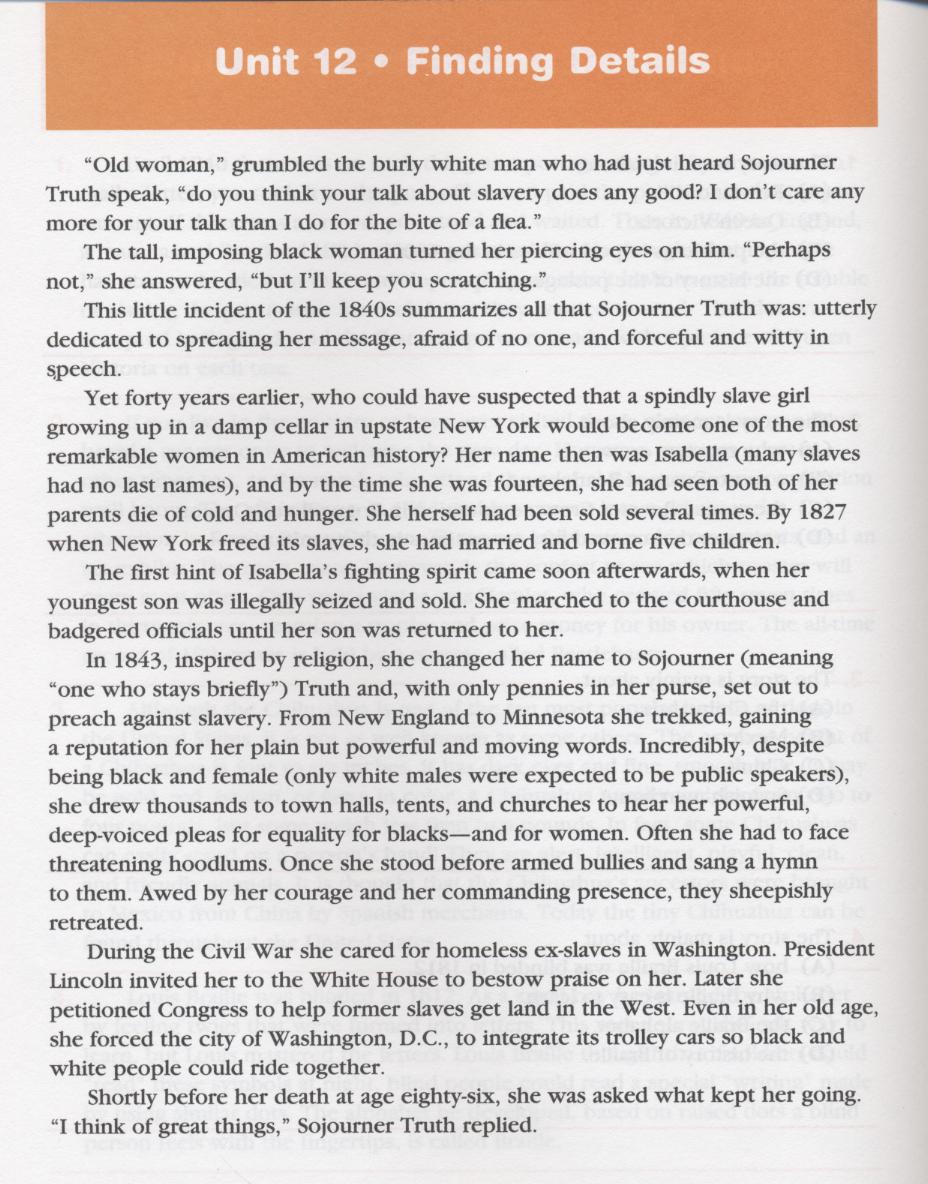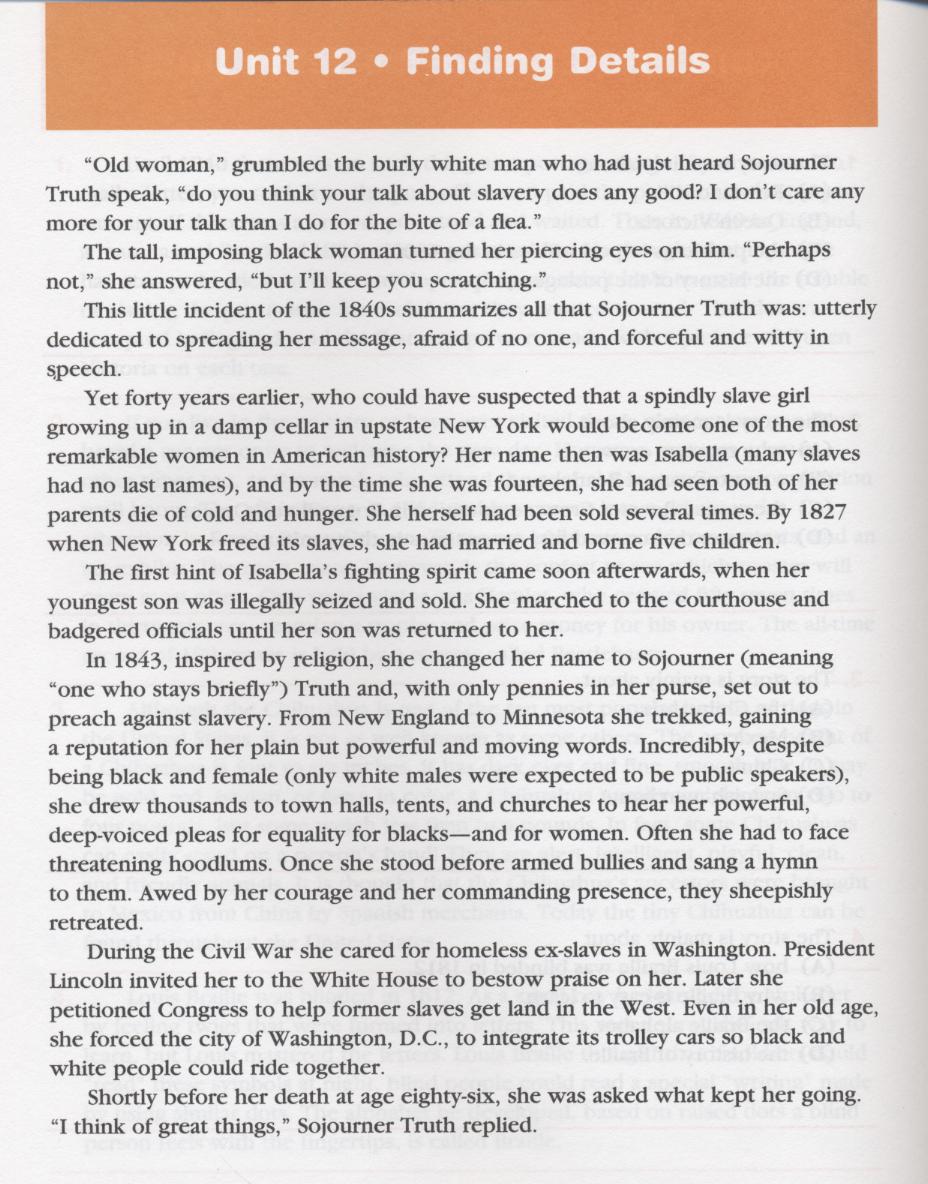804stilwell - 8th Grade - Reading - Benchmark 3

The 804stilwell - 8th Grade - Reading - BenchMark 3 quiz assesses understanding of language elements like synonyms, antonyms, homonyms, and key literary elements such as conflict, plot, and setting. It's designed to enhance reading and comprehension skills in an engaging way.
- 1.
1.MATCH THE DESCRIPTION WITH THE CORRECT DEFINITION.Synonyms
- A.
A. opposites
- B.
B. words that mean the same, or nearly the same
- C.
C. words that sound alike, but are spelled differently
Correct Answer
B. B. words that mean the same, or nearly the sameExplanation
The correct answer is B. "words that mean the same, or nearly the same". Synonyms are words that have similar meanings and can be used interchangeably in certain contexts. They may not be identical in meaning, but they are closely related and can be used as alternatives to each other.Rate this question:
-
- 2.
2.MATCH THE DESCRIPTION WITH THE CORRECT DEFINITION.Antonyms
- A.
A. words that mean the same, or nearly the same
- B.
B. words that sound alike, but are spelled differently
- C.
C. opposites
Correct Answer
C. C. oppositesExplanation
The correct answer is C. opposites. Antonyms are words that have opposite meanings. They are used to express contrast or to emphasize differences between two things. For example, "hot" and "cold" are antonyms because they have opposite meanings.Rate this question:
-
- 3.
3.MATCH THE DESCRIPTION WITH THE CORRECT DEFINITION.Homonyms
- A.
A. opposites
- B.
B. words that sound alike, but are spelled differently
- C.
C. words that mean the same, or nearly the same
Correct Answer
B. B. words that sound alike, but are spelled differentlyExplanation
The correct answer is B. words that sound alike, but are spelled differently. Homonyms are words that have the same pronunciation but different meanings and spellings. For example, "to," "too," and "two" are all homonyms because they sound the same but have different meanings and spellings.Rate this question:
-
- 4.
LITERARY ELEMENTSMatch the description with the correct meaning.4.Conflict Hero The author's central message Series of events that make up the story Villian or person working against the hero TheThe people in the story The outcome of the main conflict Surroundings, time, place, culture Point of greatest suspense or interest Struggle between opposing forces, ideas, poeple, or nature
- A.
The author's central message
- B.
The outcome of the main conflict
- C.
Series of events that make up the story
- D.
Point of greatest suspense or interest
- E.
Hero
- F.
The people in the story
- G.
Surroundings, time, place, culture
- H.
Struggle between opposing forces, ideas, poeple, or nature
- I.
Villian or person working against the hero
Correct Answer
H. Struggle between opposing forces, ideas, poeple, or natureExplanation
The correct answer is "Struggle between opposing forces, ideas, people, or nature." This refers to the conflict in a literary work, which can take various forms such as a character's internal struggle, a conflict between two characters, or a conflict between a character and their environment. Conflict is an essential element in storytelling as it creates tension and drives the plot forward. It often serves as a source of interest and suspense for the reader.Rate this question:
-
- 5.
LITERARY ELEMENTSMatch the description with the correct meaning.5.Plot Hero The author's central message Series of events that make up the story Villian or person working against the hero TheThe people in the story The outcome of the main conflict Surroundings, time, place, culture Point of greatest suspense or interest Struggle between opposing forces, ideas, poeple, or nature
- A.
Series of events that make up the story
- B.
Villian or person working against the hero
- C.
The author's central message
- D.
The outcome of the main conflict
- E.
The people in the story
- F.
Surroundings, time, place, culture
- G.
Point of greatest suspense or interest
- H.
Struggle between opposing forces, ideas, poeple, or nature
- I.
Hero
Correct Answer
A. Series of events that make up the storyExplanation
The correct answer is "Series of events that make up the story". This is because the plot refers to the sequence of events that occur in a story, including the exposition, rising action, climax, falling action, and resolution. It is the framework that holds the story together and drives the narrative forward.Rate this question:
-
- 6.
LITERARY ELEMENTSMatch the description with the correct meaning.6.Setting Hero The author's central message Series of events that make up the story Villian or person working against the hero TheThe people in the story The outcome of the main conflict Surroundings, time, place, culture Point of greatest suspense or interest Struggle between opposing forces, ideas, poeple, or nature
- A.
The author's central message
- B.
Series of events that make up the story
- C.
Villian or person working against the hero
- D.
The outcome of the main conflict
- E.
The people in the story
- F.
Surroundings, time, place, culture
- G.
Point of greatest suspense or interest
- H.
Struggle between opposing forces, ideas, poeple, or nature
- I.
Hero
Correct Answer
F. Surroundings, time, place, cultureExplanation
The correct answer is "Surroundings, time, place, culture." In literature, the setting refers to the context in which the story takes place. It includes the physical location, time period, and cultural background that influence the events and characters in the story. The setting helps to create the atmosphere and mood of the story and can also impact the plot and character development.Rate this question:
-
- 7.
LITERARY ELEMENTSMatch the description with the correct meaning.7.Resolution A. Hero B. The author's central message C. Series of events that make up the story D. Villian or person working against the hero E. TheThe people in the story F. The outcome of the main conflict G. Surroundings, time, place, culture H. Point of greatest suspense or interest I. Struggle between opposing forces, ideas, poeple, or nature
- A.
A
- B.
B
- C.
C
- D.
D
- E.
E
- F.
F
- G.
G
- H.
H
- I.
I
Correct Answer
F. FExplanation
The correct answer is F. The outcome of the main conflict. In literature, the resolution refers to the point in the story where the main conflict is resolved or concluded. It is the outcome or result of the events and struggles that have taken place throughout the story. The resolution provides closure and often reveals the ultimate fate or destiny of the characters involved. It is an essential part of the plot structure and helps to bring the story to a satisfying conclusion.Rate this question:
-
- 8.
LITERARY ELEMENTSMatch the description with the correct meaning.8.Theme A. Hero B. The author's central message C. Series of events that make up the story D. Villian or person working against the hero E. TheThe people in the story F. The outcome of the main conflict G. Surroundings, time, place, culture H. Point of greatest suspense or interest I. Struggle between opposing forces, ideas, poeple, or nature
- A.
A
- B.
B
- C.
C
- D.
D
- E.
E
- F.
F
- G.
G
- H.
H
- I.
I
Correct Answer
B. BExplanation
The correct answer is B. The author's central message. In literature, theme refers to the underlying message or main idea that the author wants to convey to the reader. It is the central idea or concept that the story revolves around and explores. The theme can often be inferred through the events, characters, and conflicts in the story. It is the deeper meaning or purpose behind the narrative and can provide insights into human nature, society, or the human condition.Rate this question:
-
- 9.
LITERARY ELEMENTSMatch the description with the correct meaning.9.Protagonist A. Hero B. The author's central message C. Series of events that make up the story D. Villian or person working against the hero E. TheThe people in the story F. The outcome of the main conflict G. Surroundings, time, place, culture H. Point of greatest suspense or interest I. Struggle between opposing forces, ideas, poeple, or nature
- A.
A
- B.
B
- C.
C
- D.
D
- E.
E
- F.
F
- G.
G
- H.
H
- I.
I
Correct Answer
A. AExplanation
The correct answer is A. The protagonist is the main character or hero of the story. They are typically the character that the reader or audience is meant to root for and identify with.Rate this question:
-
- 10.
LITERARY ELEMENTSMatch the description with the correct meaning.10.Climax A. Hero B. The author's central message C. Series of events that make up the story D. Villian or person working against the hero E. TheThe people in the story F. The outcome of the main conflict G. Surroundings, time, place, culture H. Point of greatest suspense or interest I. Struggle between opposing forces, ideas, poeple, or nature
- A.
A
- B.
B
- C.
C
- D.
D
- E.
E
- F.
F
- G.
G
- H.
H
- I.
I
Correct Answer
H. HExplanation
The climax is the point of greatest suspense or interest in a story. It is the turning point where the main conflict reaches its peak and the outcome is about to be revealed. This is often the most intense and exciting part of the story, where the reader is most engaged and invested in finding out what will happen next.Rate this question:
-
- 11.
LITERARY ELEMENTSMatch the description with the correct meaning.11.Antagonist A. Hero B. The author's central message C. Series of events that make up the story D. Villian or person working against the hero E. TheThe people in the story F. The outcome of the main conflict G. Surroundings, time, place, culture H. Point of greatest suspense or interest I. Struggle between opposing forces, ideas, poeple, or nature
- A.
A
- B.
B
- C.
C
- D.
D
- E.
E
- F.
F
- G.
G
- H.
H
- I.
I
Correct Answer
D. DExplanation
The correct answer is D. The antagonist refers to the villain or person working against the hero in a story. The antagonist creates conflict and obstacles for the protagonist, driving the plot forward. They are often responsible for creating tension and suspense in the story as they oppose the goals and desires of the hero.Rate this question:
-
- 12.
LITERARY ELEMENTSMatch the description with the correct meaning.12.Character A. Hero B. The author's central message C. Series of events that make up the story D. Villian or person working against the hero E. TheThe people in the story F. The outcome of the main conflict G. Surroundings, time, place, culture H. Point of greatest suspense or interest I. Struggle between opposing forces, ideas, poeple, or nature
- A.
A
- B.
B
- C.
C
- D.
D
- E.
E
- F.
F
- G.
G
- H.
H
- I.
I
Correct Answer
E. EExplanation
The correct answer is E because "character" refers to the people in the story. In literature, characters are the individuals who drive the plot and interact with each other. They can be protagonists (heroes), antagonists (villains or people working against the hero), or supporting characters. Characters play a crucial role in storytelling and their actions, thoughts, and dialogue contribute to the development of the plot and themes of the story.Rate this question:
-
- 13.
13.
- A.
A
- B.
B
- C.
C
- D.
D
Correct Answer
B. B -
- 14.
14.
- A.
A
- B.
B
- C.
C
- D.
D
Correct Answer
C. C -
- 15.
15.
- A.
A
- B.
B
- C.
C
- D.
D
Correct Answer
C. C -
- 16.
16.
- A.
A
- B.
B
- C.
C
- D.
D
Correct Answer
B. B -
- 17.
17.
- A.
A
- B.
B
- C.
C
- D.
D
Correct Answer
A. A -
- 18.
18.
- A.
A
- B.
B
- C.
C
- D.
D
Correct Answer
D. D -
- 19.
19.
- A.
A
- B.
B
- C.
C
- D.
D
Correct Answer
C. C -
- 20.
20.
- A.
A
- B.
B
- C.
C
- D.
D
Correct Answer
A. A -
- 21.
21.
- A.
A
- B.
B
- C.
C
- D.
D
Correct Answer
D. D -
- 22.
22.
- A.
A
- B.
B
- C.
C
- D.
D
Correct Answer
C. C -
- 23.
23.
- A.
A
- B.
B
- C.
C
- D.
D
Correct Answer
B. B -
- 24.
24.
- A.
A
- B.
B
- C.
C
- D.
D
Correct Answer
C. C -
- 25.
25.
- A.
A
- B.
B
- C.
C
- D.
D
Correct Answer
B. B -
- 26.
26.
- A.
A
- B.
B
- C.
C
- D.
D
Correct Answer
B. B -
- 27.
27.
- A.
A
- B.
B
- C.
C
- D.
D
Correct Answer
D. D -
Quiz Review Timeline +
Our quizzes are rigorously reviewed, monitored and continuously updated by our expert board to maintain accuracy, relevance, and timeliness.
-
Current Version
-
Mar 21, 2023Quiz Edited by
ProProfs Editorial Team -
Mar 02, 2011Quiz Created by
Akimble
 Back to top
Back to top
















